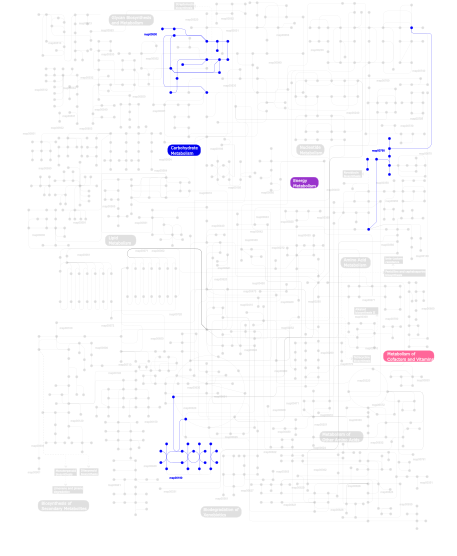The domain within your query sequence starts at position 54 and ends at position 128; the E-value for the Cation_ATPase_N domain shown below is 9.27e-15.
DDHRLSNTDLEQKYGTNIIQGLSSIRAAELLARDGPNALTPPKQTPEIIKFLKQMVGGFS ILLWIGAALCWIAYV
Cation_ATPase_NCation transporter/ATPase, N-terminus |
|---|
| SMART accession number: | SM00831 |
|---|---|
| Description: | This entry represents the conserved N-terminal region found in several classes of cation-transporting P-type ATPases, including those that transport H+, Na+, Ca2+, Na+/K+, and H+/K+. In the H+/K+- and Na+/K+-exchange P-ATPases, this domain is found in the catalytic alpha chain. In gastric H+/K+-ATPases, this domain undergoes reversible sequential phosphorylation inducing conformational changes that may be important for regulating the function of these ATPases (PUBMED:12480547), (PUBMED:12529322). |
| Interpro abstract (IPR004014): | P-ATPases (also known as E1-E2 ATPases) ([intenz:3.6.3.-]) are found in bacteria and in a number of eukaryotic plasma membranes and organelles [ (PUBMED:9419228) ]. P-ATPases function to transport a variety of different compounds, including ions and phospholipids, across a membrane using ATP hydrolysis for energy. There are many different classes of P-ATPases, which transport specific types of ion: H + Na + K + Mg 2+ Ca 2+ Ag + and Ag 2+ Zn 2+ Co 2+ Pb 2+ Ni 2+ Cd 2+ Cu + and Cu 2+ . P-ATPases can be composed of one or two polypeptides, and can usually assume two main conformations called E1 and E2. Transmembrane ATPases are membrane-bound enzyme complexes/ion transporters that use ATP hydrolysis to drive the transport of protons across a membrane. Some transmembrane ATPases also work in reverse, harnessing the energy from a proton gradient, using the flux of ions across the membrane via the ATPase proton channel to drive the synthesis of ATP. There are several different types of transmembrane ATPases, which can differ in function (ATP hydrolysis and/or synthesis), structure (e.g., F-, V- and A-ATPases, which contain rotary motors) and in the type of ions they transport [ (PUBMED:15473999) (PUBMED:15078220) ]. The different types include:
This entry represents the conserved N-terminal region found in several classes of cation-transporting P-type ATPases, including those that transport H + ( EC 3.6.3.6 ), Na + ( EC 3.6.3.7 ), Ca 2+ ( EC 3.6.3.8 ), Na + /K + ( EC 3.6.3.9 ), and H + /K + ( EC 3.6.3.10 ). In the H + /K + - and Na + /K + -exchange P-ATPases, this domain is found in the catalytic alpha chain. In gastric H + /K + -ATPases, this domain undergoes reversible sequential phosphorylation inducing conformational changes that may be important for regulating the function of these ATPases [ (PUBMED:12480547) (PUBMED:12529322) ]. |
| Family alignment: |
There are 45454 Cation_ATPase_N domains in 45418 proteins in SMART's nrdb database.
Click on the following links for more information.
- Evolution (species in which this domain is found)
- Cellular role (predicted cellular role)
- Literature (relevant references for this domain)
- Metabolism (metabolic pathways involving proteins which contain this domain)
- Structure (3D structures containing this domain)
- Links (links to other resources describing this domain)











































































































